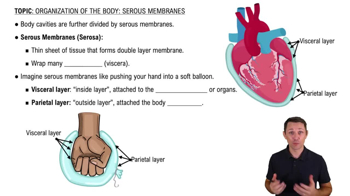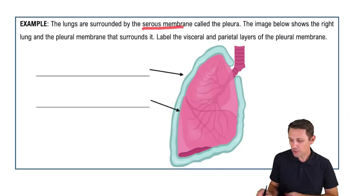Organization of the Body: Serous Membranes definitions Flashcards
 Back
BackOrganization of the Body: Serous Membranes definitions
1/10
Terms in this set (10)
- Serous MembranesThin tissues forming a double-layered membrane around organs in thoracic and abdominal regions.
- SerosaAnother term for serous membranes, indicating their thin, double-layered structure.
- Visceral LayerThe inner layer of the serous membrane attached directly to the organs.
- Parietal LayerThe outer layer of the serous membrane attached to the body wall.
- Serous CavityThe space or potential space between the visceral and parietal layers of the serous membrane.
- Serous FluidLubricating fluid within the serous cavity that allows smooth organ movement.
- Thoracic RegionThe part of the body cavity where serous membranes surround organs like the heart and lungs.
- Abdominal Pelvic RegionThe lower part of the body cavity where serous membranes surround organs like the intestines.
- Connective TissueTissue that attaches the visceral and parietal layers to organs and body walls, respectively.
- Potential SpaceA space that can exist between the serous membrane layers, often without actual separation.



